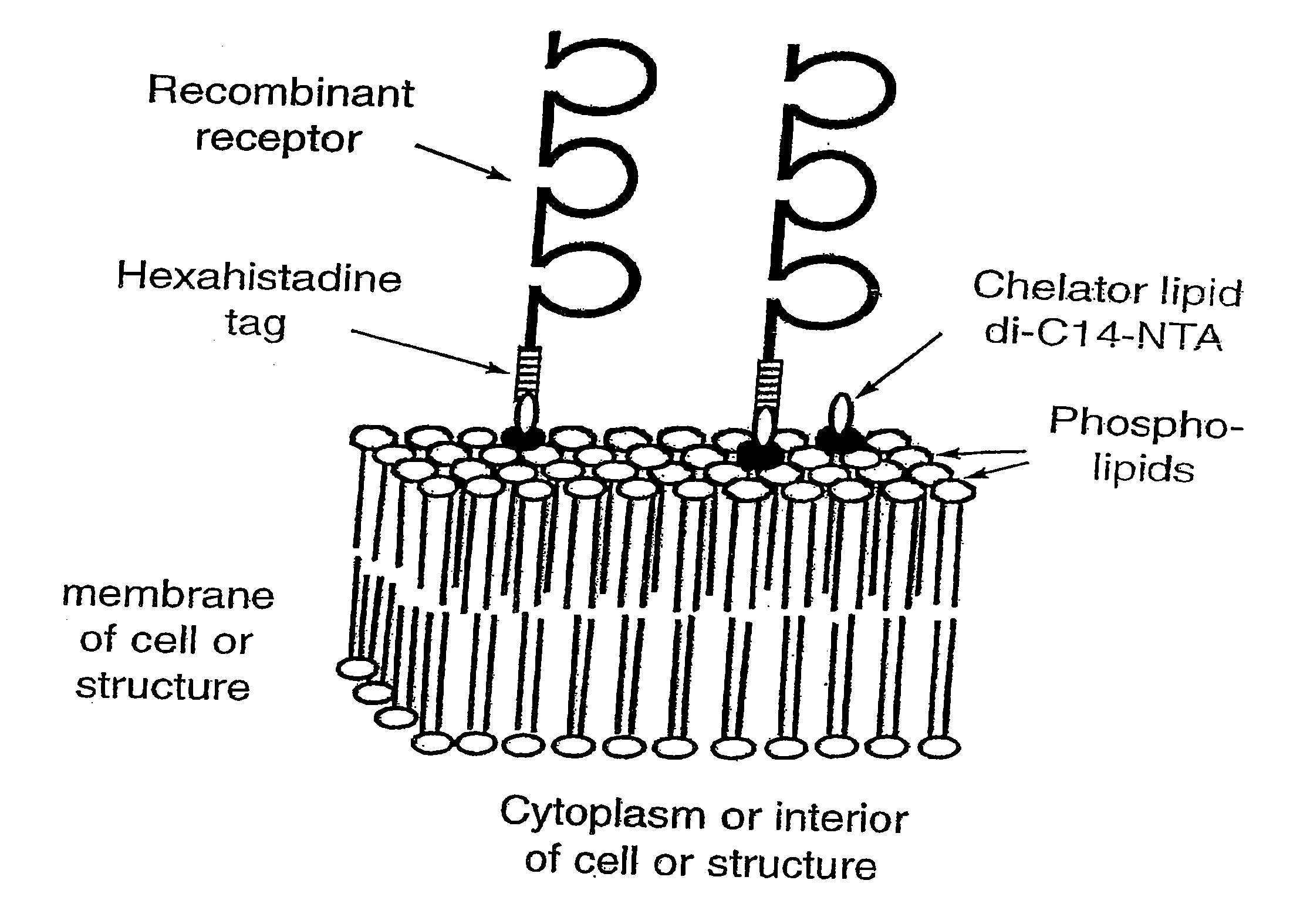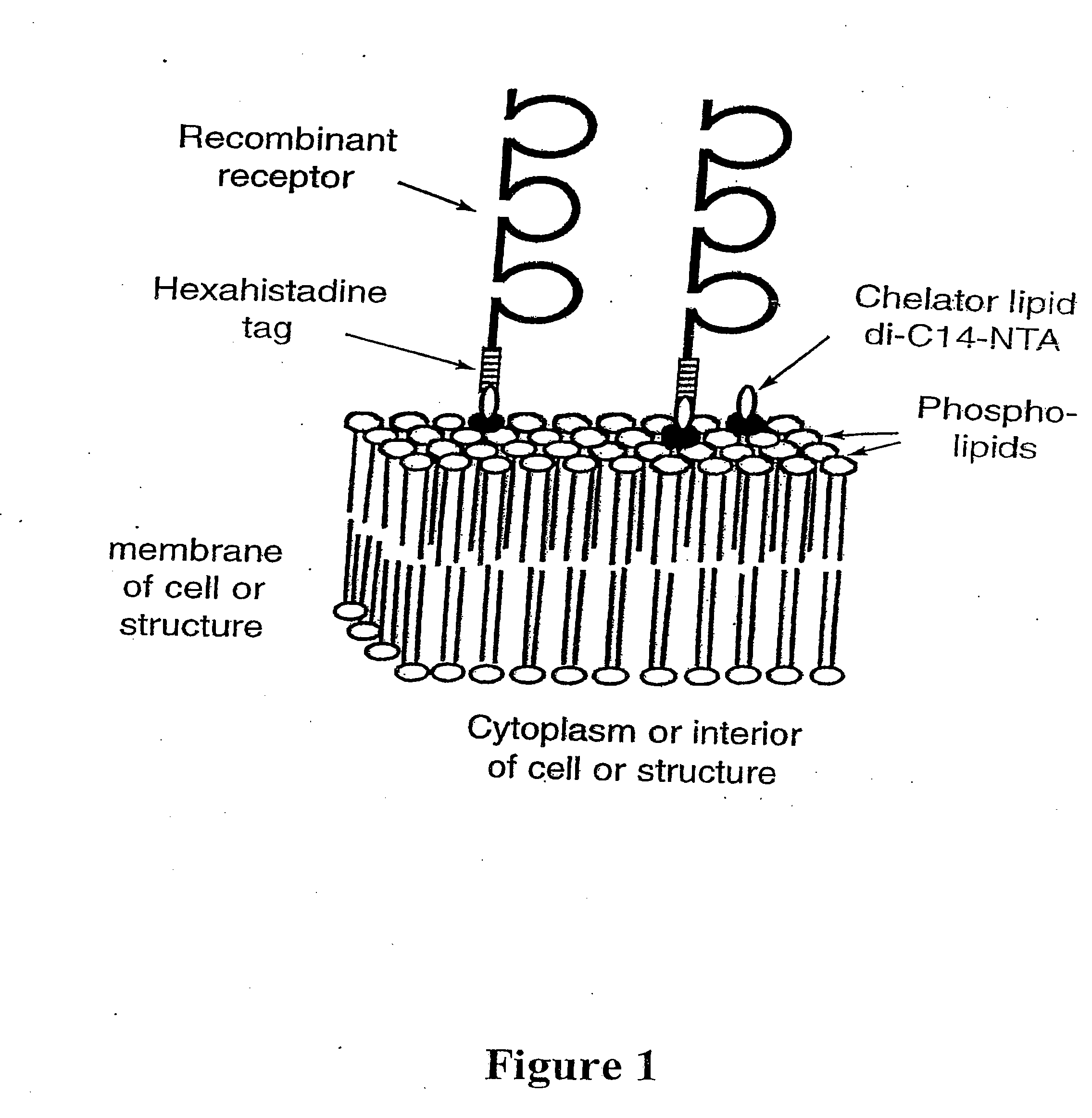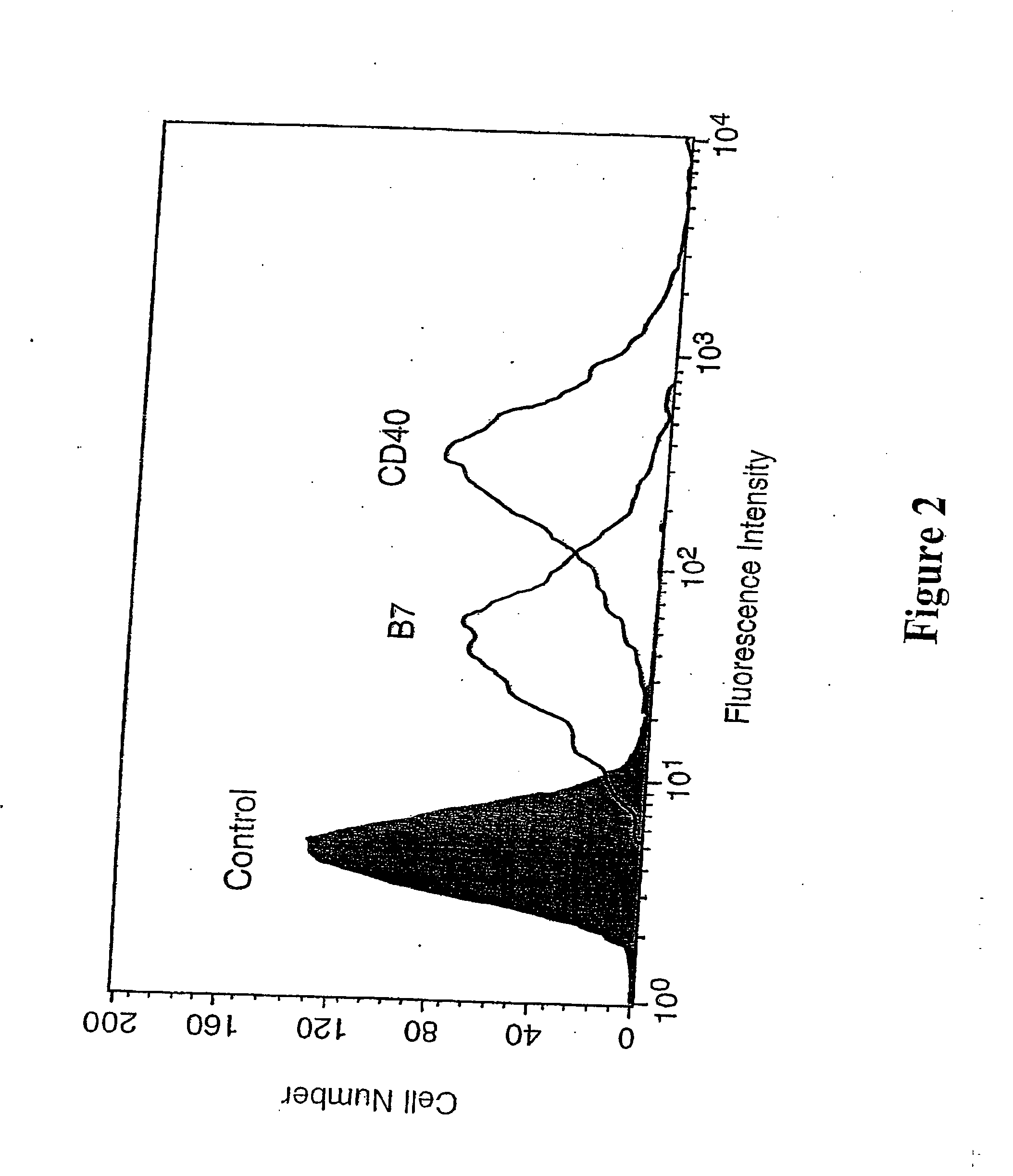Model membrane systems
a membrane system and model technology, applied in the field of metal chelator lipids, can solve the problem that the technique does not describe a means of modifying the properties of biological and/or synthetic membranes and liposomes for the purpose of altering
- Summary
- Abstract
- Description
- Claims
- Application Information
AI Technical Summary
Benefits of technology
Problems solved by technology
Method used
Image
Examples
example 1
[0147] Using the instant invention to modify the surface of cells and other biological and / or synthetic membranes and liposomes by engraftment of hexahistidine-tagged molecules (see FIG. 1), for the development of vaccines and for drug targeting in vivo.
[0148] The histograms in FIG. 2 show fluorescence-activated cell sorting (FACS) profiles of murine mastocytoma P815 cells carrying engrafted recombinant hexa-histidine-tagged murine B7.1 and CD40. P815 cells were pre-incubated for 30 min at 37° C. with a suspension (0.1 mM) of control lipid di-myristoyl-phosphatidylcholine (DMPC; also referred to as di-C14-PC; control), or the chelator lipid NTA-DTDA, before being washed in PBS and incubated with a mixture of hexa-histidine-tagged B7.1 and CD40 (each at ˜20 μg / ml). The cells were then washed again in PBS and stained by an incubation (30 min at 4° C.) with either biotinylated 16-10A1 or biotinylated B-3 / 23 monoclonal antibody (i.e. biotinylated anti-B7.1 or anti-CD40), as indicated, ...
example 2
[0149] The Example relates to modifying the surface of tumor cells to enhance tumor immunity.
[0150] Recent work indicates that the transmembrane and cytoplasmic regions of B7-1 and B7-2 are not required for T cell co-stimulation (20), and that T cell co-stimulation also occurs when the B7-1 is expressed on tumor cell surfaces in a GPI-anchored form (21). Also, the extracellular regions of any cell surface receptor molecules (e.g. the murine T cell co-stimulator molecules B7.1 and CD40) can be produced to contain a hexa-histidine or other appropriate peptide tag on the carboxyl terminal. In this form the present invention provides a method of anchoring these co-stimulator molecules directly onto the cell surface in the correct orientation, thereby mimicking the co-stimulatory function of these molecules on the surface of antigen presenting cells. The instant invention, therefore, has implications for tumor vaccine development, by providing a more convenient and safe alternative to t...
example 3
[0152] To test the ability of P815 cells bearing engrafted co-stimulatory molecules to induce anti-tumor responses in vivo, mice were immunized with P815 cells bearing the engrafted molecules to see if this could stimulate CTL activity and / or affect tumor growth in syngeneic animals. Separate groups of DBA / 2 mice were immunized with either PBS, or with γ-irradiated P815 cells bearing engrafted EPOR-6H, B7.1-6H, or B7.1-6H plus CD40-6H. Two weeks after immunization, spleens were removed from the mice, and splenic T cells were isolated and assessed for their ability to kill native P815 cells in a standard 51Cr release assay. The data in FIG. 3 show that at all the effector target cell ratios indicated (0. 5:1, 1:1, 5:1), only a low level (2-5%) of lysis was induced by T cells from mice immunized with PBS (as control). The lytic activity of T cells from mice immunized with P815-EPOR (as control protein) was also low ranging from 7-16%. Interestingly, at all effector:target cell ratios ...
PUM
 Login to View More
Login to View More Abstract
Description
Claims
Application Information
 Login to View More
Login to View More - R&D
- Intellectual Property
- Life Sciences
- Materials
- Tech Scout
- Unparalleled Data Quality
- Higher Quality Content
- 60% Fewer Hallucinations
Browse by: Latest US Patents, China's latest patents, Technical Efficacy Thesaurus, Application Domain, Technology Topic, Popular Technical Reports.
© 2025 PatSnap. All rights reserved.Legal|Privacy policy|Modern Slavery Act Transparency Statement|Sitemap|About US| Contact US: help@patsnap.com



